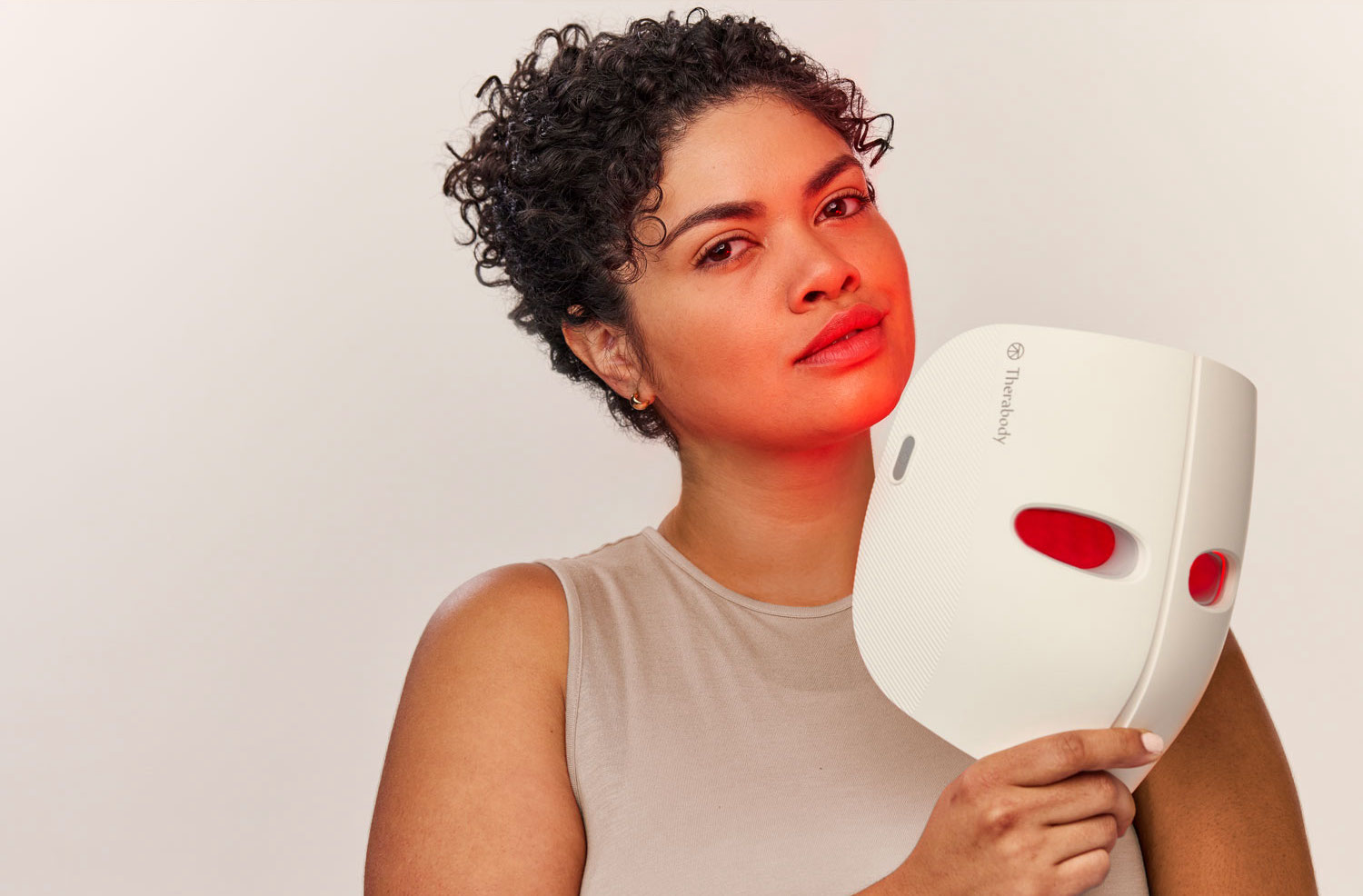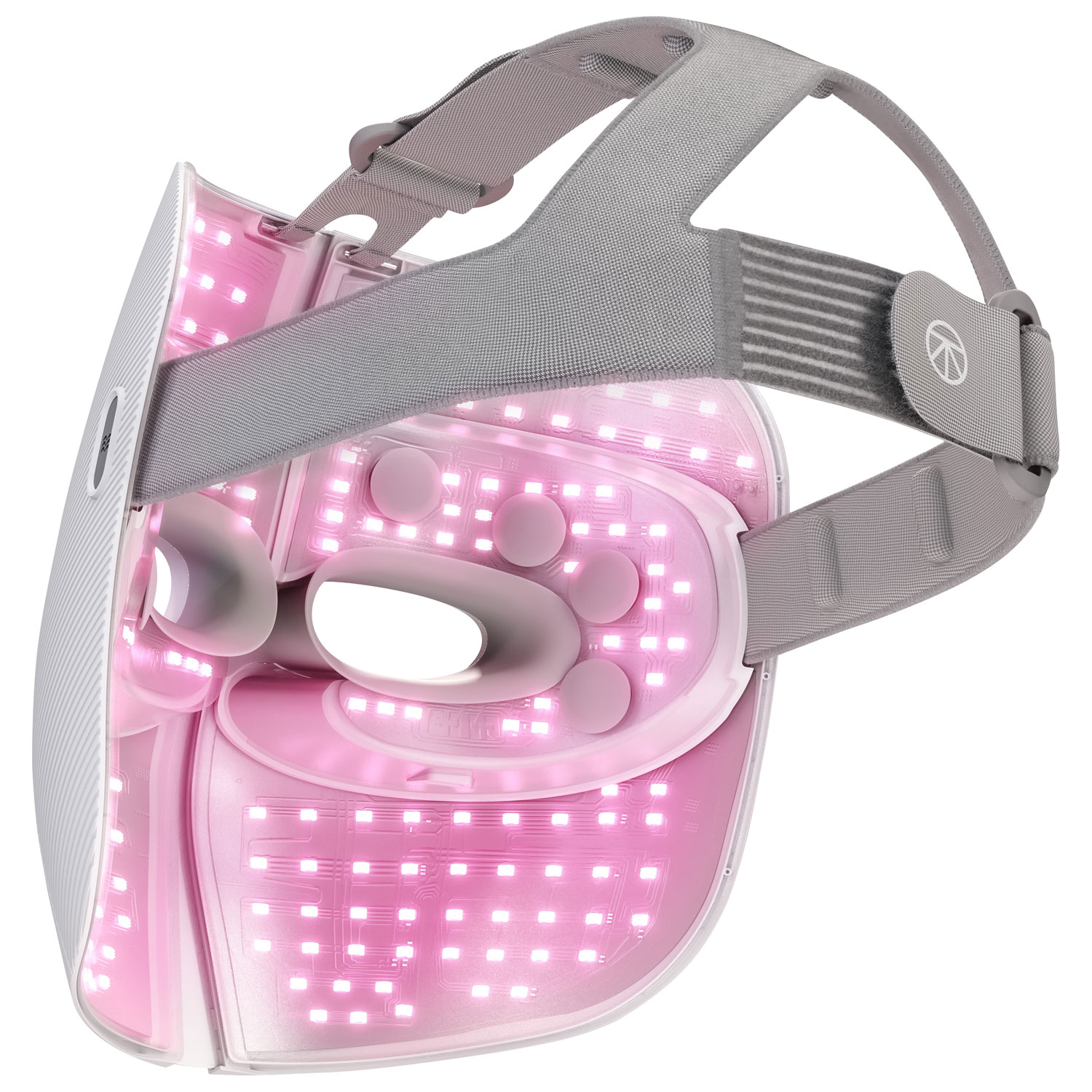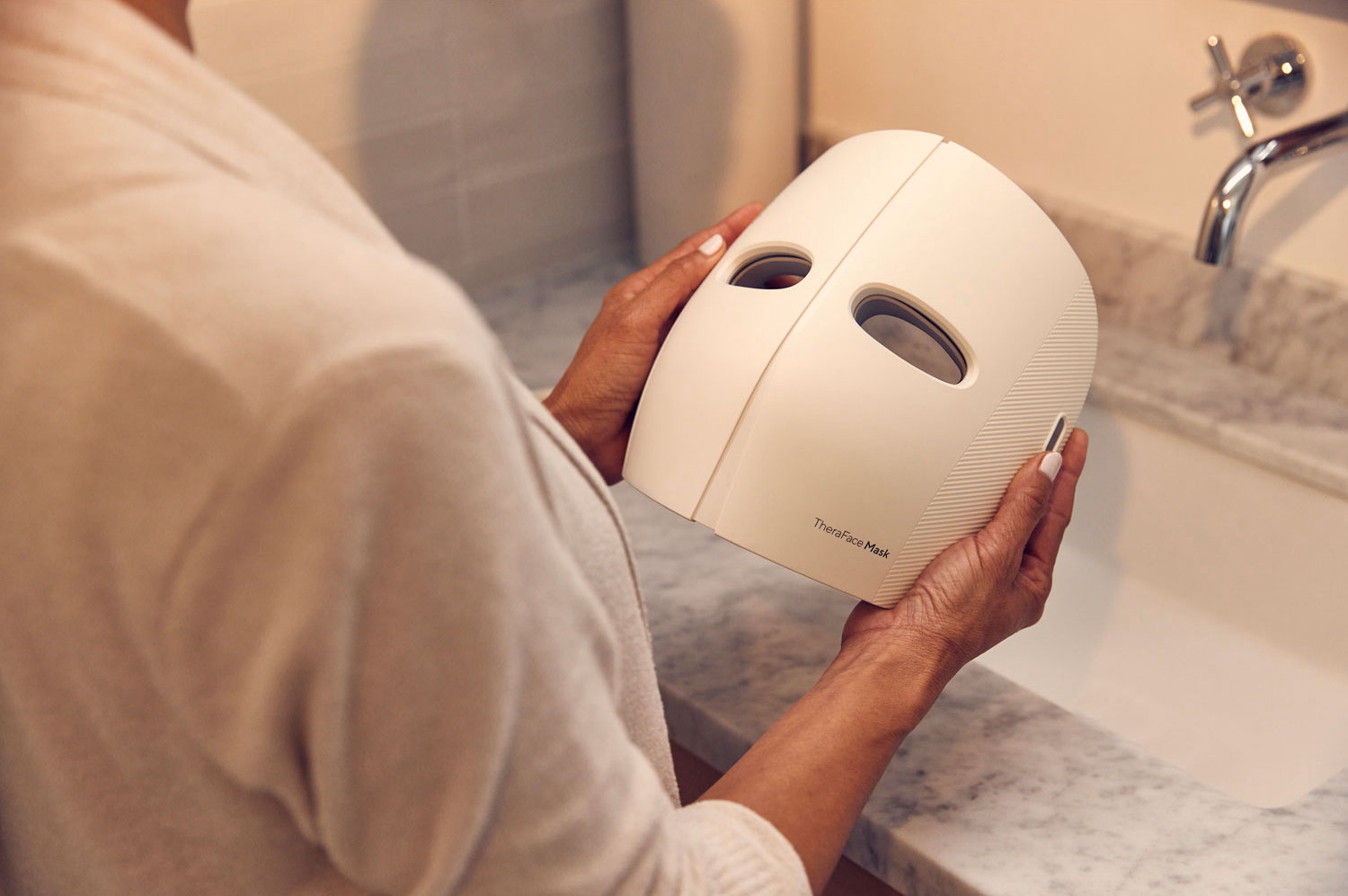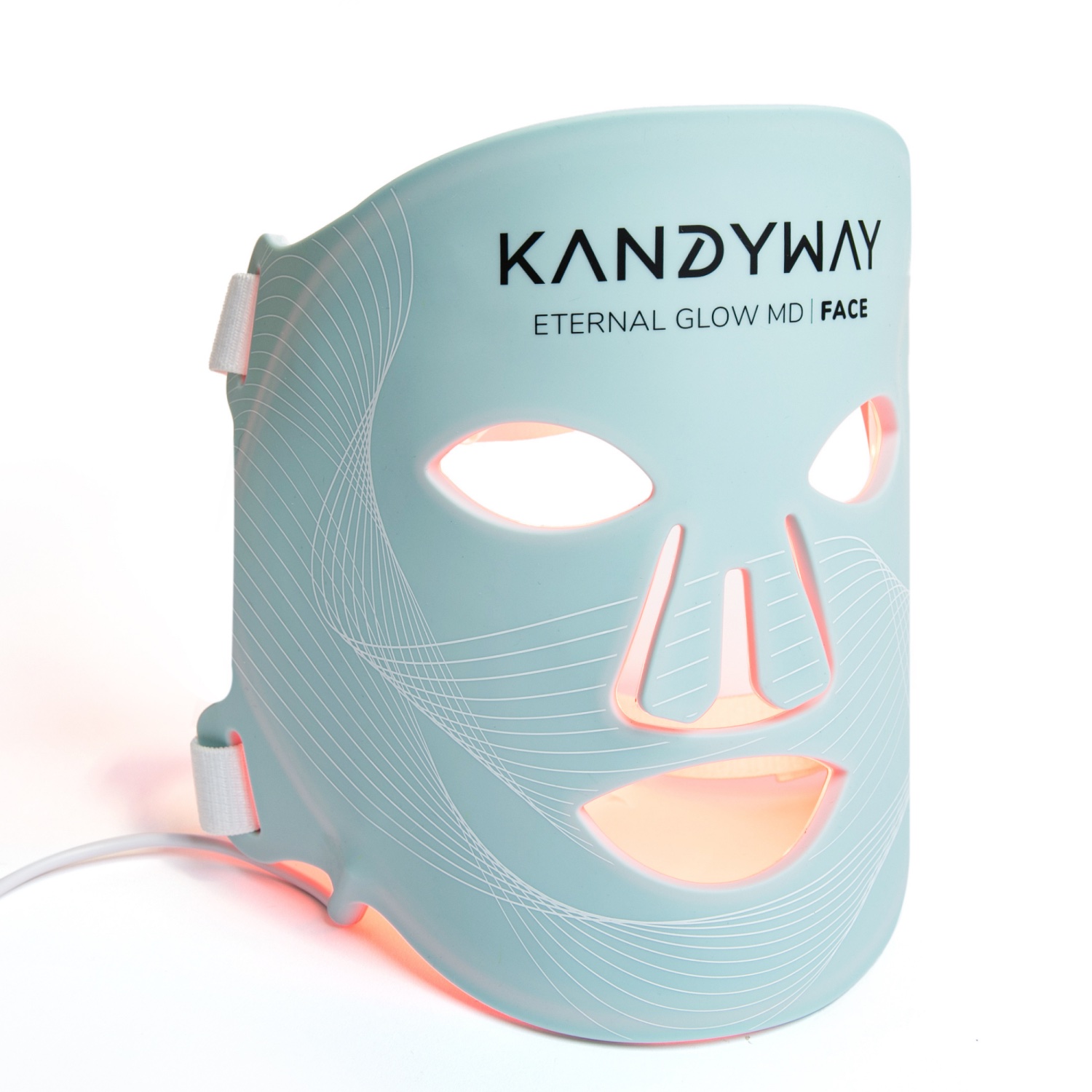
Light therapy is a fast-growing skincare product category used by dermatologists and consumers to treat skin conditions without any direct skin contact. Products like LED face masks for home use are becoming increasingly common for addressing the signs of ageing, treating acne, and more. This article will help you learn about light therapy masks, including some tips for choosing the right treatment wavelength for your skin.
What is light therapy?
Light therapy is a skincare technology that uses directional wavelengths of 400nm to 700nm (nanometres) to treat different skin concerns and conditions. LED light therapy can be delivered at home through products like LED face masks and LED light therapy wands. The most common type of light therapy is red light therapy, which covers the 620nm to 750nm spectrum and has been shown to aid in reducing wrinkles, scars, and acne.
What is a light therapy mask?
A light therapy mask is a specialized tool used to deliver the benefits of LED therapy directly to your face (and, sometimes, neck). Compared to LED light therapy panels, they are generally smaller, more portable, and more affordable for use at home. LED face masks are often less powerful than the large LED panels that you may see at a dermatologist’s office, so check each specific product for its intensity, number of bulbs, and recommended usage. As a product’s intensity changes, you may see different recommendations for frequency or duration of use in order to achieve optimal results.
Another option for light therapy at home is a light therapy wand. These may be slowly moved over your entire face to address skin concerns or may be used for targeted treatment. For all-over treatment, light therapy masks are generally preferred over wands as they deliver an easier, more effective treatment session. However, for spot treatment of discolouration, small light therapy wands can be a handy, portable alternative to undergoing a full mask treatment.
How do I use an LED face mask?
Light therapy masks should be used according to the instructions for your specific product. There is significant variation in the intensity of these masks, so their usage can vary quite a bit. In general, LED face masks will be turned on for 10–30 minute sessions. These sessions may be daily or a few times a week, and typically taper off for maintenance over time. (For instance, you may start your light therapy journey with four 20 minute sessions each week for two months, then taper to one 20 minute session each week to maintain your results.)
Most brands recommend using your light therapy mask on clean, dry skin. The LEDs in the mask should not come into direct contact with your skin.
What colours of LED lights are used in face masks?
LED face masks use the visible light spectrum from 400nm to 700nm. The colour of light you will use depends on what you’re hoping to target, so it’s a good idea to purchase your face mask with your skincare goals already in mind, or to buy a mask with customizable colour settings.
Blue light therapy (400nm–500nm) is typically used to treat acne and oily skin, usually in combination with red light wavelengths. These lights will often look violet or purple when you look at them (due to the combination of wavelengths). Red light therapy (around 700nm) is commonly used to address wrinkles, hyperpigmentation issues, and redness. Your red light therapy may look more amber as the wavelengths get closer to 600nm, which may optimize red light therapy for addressing swelling, or more pink for a general treatment at about 700nm. As red light therapy enters the near-infrared range, it will begin to look very intensely red and becomes more optimized for wound healing and increasing collagen production.
There are significantly fewer studies covering other visible light wavelengths, such as the green, yellow, and purple colour spectrums. These products are occasionally advertised as having the ability to address issues such as scarring or lymphatic function, but such claims are not well supported by scientific studies. To purchase an effective LED face mask, make sure to select one from a reputable company that backs its products with published research that is available to the public to read.
Do LED masks work?
Yes—but this is a difficult question to answer comprehensively! Like any skincare treatment, LED light therapy can have different results for each person. On top of individual variations, it is even more difficult to “prove” the efficacy of an LED mask because it is such a long term treatment for signs of ageing. Ageing is so subjective and so unique to every individual that it can be difficult to see your comparative results at home. With a great LED face mask, you won’t know for sure that a product has kept you looking youthful until you’ve used it for a number of years—kind of like how you don’t see the true damage of a sunburn until 20 or 30 years have passed.
So, let’s look at some facts and data instead. We know definitively that LED light therapy is used by doctors and aestheticians in clinical settings to help repair skin and increase collagen production. We also know that LED masks are less intense, miniaturized forms of the same technology used in doctor’s and dermatologist’s offices designed for safe and more frequent use at home. LED therapy has been shown in clinical studies to be effective for treating skin conditions, and LED masks have been widely available to consumers since the 2010s.
It may feel odd to treat your skin with something that never really “touches” it, but all signs and studies suggest that yes, LED face masks really do work and are effective over time! Just make sure to purchase a product with the intensity and wavelength appropriate for your skincare goals.
Will an LED face mask give me a tan? Is there UV in LED?
No—an LED face mask will not give you a tan. LED light therapy does not contain UV (either UVA or UVB rays) and these products cannot be used for tanning. UV light, or ultraviolet light, ranges from 100nm to 400nm and is proven to cause skin damage. LED light therapy is safe for the skin and uses wavelengths of visible light, which is in the range of 400nm to 700nm. These wavelengths do not overlap. Some light therapy devices will use infrared light or a combination of near-infrared and infrared light to aid in wound healing; such devices use wavelengths of 700nm to 1000nm. (Infrared light is also common in other devices for home use, such as infrared saunas.)
Fun fact: Grow lights for plants also do not give off UV rays! Much like human skin, plants require wavelengths of 400nm to 700nm to survive. So, while there might be some overlap between the wavelengths of light in your grow lights and face mask, there will be no overlap in the effective wavelengths used in your face mask versus a tanning bed.
The bottom line
LED light therapy face masks are a gentle, effective way to level up your skincare routine at home. These devices are designed to be used routinely for both long-term and short-term results. With a great LED face mask, you should see results within a couple months—and those results should maintain over time.
Shop LED face masks and light therapy devices online at Best Buy today.








